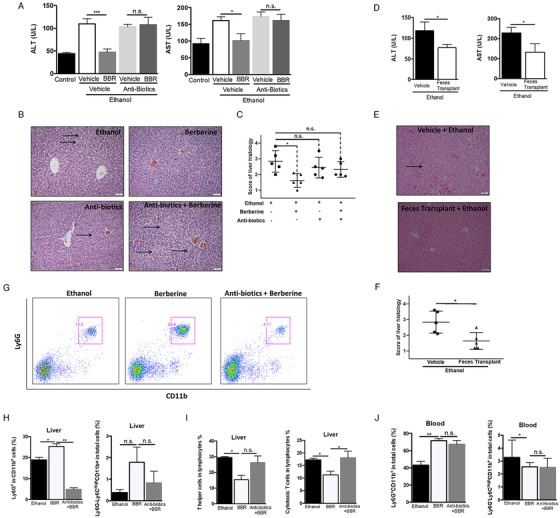FIGURE 6.

Gut microbiota is actively involved in the beneficial effect of berberine. PGF mice were built up by antibiotics treatment. These PGF mice received ethanol‐ Lieber‐DeCarli diet with berberine treatment (10 mg/kg) or vehicle treatment for 11 days (N = 5 for each group). Then liver injury was evaluated and the population of G‐MDSC‐like cells in mice were examined by flow cytometer. A, Serum ALT and AST level of mice from control group, ethanol model group, berberine group, berberine with antibiotics group, and vehicle with antibiotics group. B, Representative H&E staining images of livers and scoring of histological damage (C) from mice of ethanol model group, berberine group, berberine with antibiotics group, and vehicle with antibiotics group. Moreover, cecal contents were collected from mice of berberine group and then treated to mice receiving ethanol‐Lieber‐DeCarli diet for 11 days (N = 5 for each group). D, ALT and AST level of mice from ethanol model group and feces transplant group. E, Representative H&E staining images of liver and scoring of histological damage (F) from mice of model group and feces transplant group. G, The representative histogram images and quantification (H) of flow cytometric analyses of G‐MDSC‐like cells in liver of mice from ethanol group, berberine group, and berberine with antibiotics group. I, The population of T helper and cytotoxic T cells in liver of mice from ethanol group, berberine group, and berberine with antibiotics group. J, The population of G‐MDSC‐like cells and M‐MDSC in blood of mice from ethanol group, berberine group, berberine with antibiotics group. * P < .05, ** P < .01; n.s., not significant; BBR, berberine
